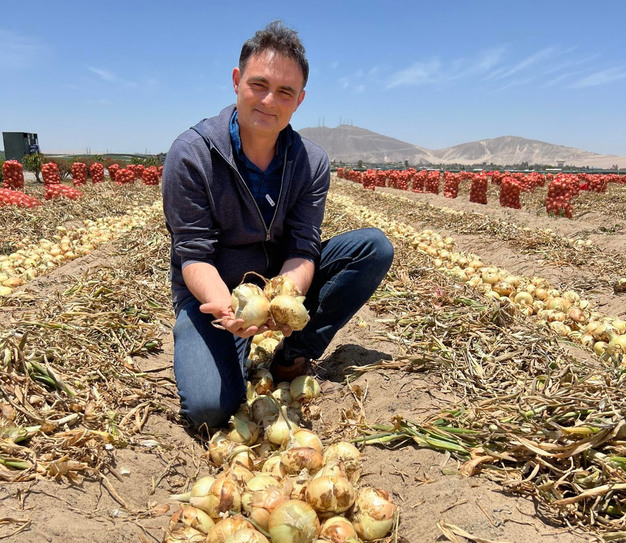The sweet onion market is entering a stage of consolidation in Spain and across Europe. Peru remains the main supplier of this differentiated product within the onion segment, which is also set to see new developments soon, according to Yummy Fresh.
"In the past ten years, sweet onions have carved out a space in the Spanish market, going from being little known to becoming a regular item in retail, foodservice, and households," says David Casanoves of Yummy Fresh. "Spain has gone from being just another destination for Peruvian onions to becoming the second most important market after the United States, with truly spectacular growth. Today, Peruvian production totals about 10,000 containers annually, of which around 6,000 are shipped to the U.S., about 3,000 arrive in Spain, and the rest are distributed among Ecuador, Panama, Chile, and other countries in the region."
 © Yummy Fresh
© Yummy Fresh
The U.S. market is the benchmark, where most of the product is handled through programs organized directly with supermarket chains. "There, 90% of fresh sweet onions are sold through retail. In Spain, we are still in a growth phase. It's true we no longer see the annual increases of 15–16% from the early years, but we are continuing to advance, with very good acceptance also in other European markets such as France, Italy, and Portugal," he adds.
According to Casanoves, the product has won its place on its own merits. "Sweet onions have earned consumer trust because of their organoleptic qualities. There is no better onion to eat raw: they are mild, crunchy, not pungent, and very versatile in the kitchen. Some consumers won't buy any other type of onion."
Import-dependent supply
Sweet onion supply depends largely on imports. In Spain, national production covers only about three months of the year, while for the rest of the year the market relies on imported products, mainly from Peru, but also from Mexico and Senegal. "The curious thing is that we import more than we produce, which is unusual in other crops," Casanoves points out.
 © Yummy Fresh
© Yummy Fresh
Price stability, however, remains a challenge. "There have been times of oversupply when opportunistic operators brought in too much volume in a short period, which led to seeing sweet onions, normally a premium product, sold in sacks with little care for presentation. For us, sweet onions are a value-added product that deserves proper presentation, but in the end, the law of the lowest price also applies," he notes.
With Yummy Fresh, the strategy is clear: "We want to offer our clients quality, reliability, and trust. We're not inventing anything new, but we do want sweet onions to take the place they deserve in the market. That's something we can see reflected in our clients' responses and the value they give to our commitment."
Innovation is also part of the company's DNA. "We come from the seed world, and seeds are, by definition, the origin of innovation," Casanoves explains. "That's why we've been working for several years on what will be our next launch at Yummy Fresh: The red flat sweet onion."
 © Yummy Fresh
© Yummy Fresh
"One of the key features of sweet onions is their flat shape, which helps consumers recognize them immediately. By maintaining that trait, we want to launch a red variant that is also flat and sweet, under the Sweet Rossie brand. We already have promising varieties that could succeed in this niche by 2026," he says.
 © Yummy Fresh
© Yummy Fresh
For David, the sweet onion remains a product with long-term potential. "It's extremely versatile, it works for everything, and judging by the success it has had in Spain, there is still a lot of room for growth."
 For more information:
For more information:
Yummy Fresh
Tel. +34 961 204 340
[email protected]
https://www.yummyfresh.es/
